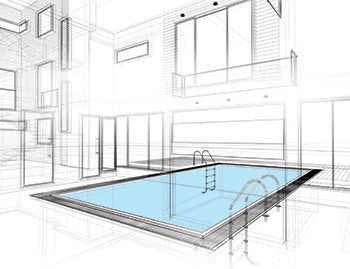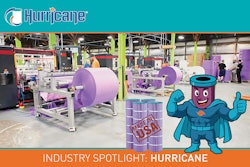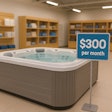
Confidence — it’s a fickle thing. Since the recession, consumers have slowly grown more comfortable spending discretionary income. However, as pool builders know, sometimes it takes extra coaxing to get homeowners to commit to a big expense like a pool project. It can also take some coaxing to get them to commit to you.
“The No. 1 fear of a consumer is, of course, lack of trustworthiness of the contractor,” says Noah Nehlich, founder of Structure Studios. “They don’t want to be ripped off. But the other part of that fear is not understanding what they’re going to get on their property.”
According to Nehlich, one way to overcome this fear is to take advantage of software that not only makes the design process easier, but also adds an impressive professional polish to your presentation. Here, Nehlich shares just a few of the ways you can use building software to win more clients.
1. Give ‘Em Everything They Want
When consulting with a homeowner torn between tile options or a bigger outdoor kitchen, a builder can use software to make on-the-spot changes to reflect those new interests. And as the design changes, the software updates material count, area, perimeter and other calculations accordingly to keep you within budget.
In particular, the ability to instantly show clients the full range of what you offer can help customers feel more confident in their final choices.
“There’s no hesitation,” Nehlich says. “There’s no problem if the wife says, ‘Hey, instead of making the deck fit six people, let’s make it fit eight.’ On the computer, they just stretch it out and they instantly have the material count calculations.”
This, of course, also saves the builder time and money.
“In a traditional sense, contractors would have to go re-measure the property or go get cans of string or spray paint to try to communicate to the customer how big it is, and recalculate it,” Nehlich says. “It’s very time-consuming; it could take days or weeks to go back and forth, but now it’s instantaneous.”
2. Build Trust, Faster
Part of the reason homeowners are uneasy about a building project: the chance things will change. Thanks to meticulous calculations and careful data, builders can provide accurate quotes that homeowners can trust.
“If the contractor or designer can be as transparent as possible up front and communicate, ‘This is exactly what we’re going to be doing for this price,’ the customer can look at it and understand what kind of enjoyment they’re going to get out of that project, and that increases the professionalism of that contractor,” Nehlich says.
3. Tap into Emotions
“A lot of consumers have trouble visualizing what they’re getting,” Nehlich says. “When we create 3-D designs, they have an emotional connection to that project before it’s ever built.”
Software can tap into those emotional ties, and it’s something Nehlich encourages his users to explore. (See the sidebar for more.) For example, when creating a design for a project, builders can use software to make the home look as similar to the client’s as possible, which makes it easier to imagine the overall look and feel of the finished project.
“Even though builders are not selling the house, and they might not be doing anything to the house, that’s the emotional anchor. The homeowner says, ‘That’s my house. Anything that’s added to it, I understand how that relates to my life.’”
4. Put on a Show
The beauty of 3-D design software is the capability to provide client walkthroughs — as Nehlich says, “they can do everything but get wet.” These walkthroughs present a valuable opportunity to wow your potential clients with a show-stopping presentation.
Some builders may take a laptop to an in-home consultation with potential clients and collaboratively design the project. Others may visit the property for measurements and a meeting with the homeowners and invite them back to the office for a design walkthrough in a special home theater.
“A lot of builders have theater rooms with big, fluffy sofas, big TVs with a wireless mouse and keyboard and surround sound, and they’ll walk clients through the backyard. With the speakers, they can hear the birds and the water and fire features. You get the whole family really engaged and into the environment while in the contractor’s office,” Nehich says.
Nehlich also adds that a theater room is a great alternative to a big showroom with example pools, meaning it can save money on your end.
Put it all together, and Nehlich says software can lead to greater close rates.
“From what we understand from our members, they close at least 30 percent more leads than they did before,” he says. “Of course, it varies from contractor to contractor and market to market, but we get emails all the time from contractors who say, ‘Hey, my close rate is now 95 percent,’ which is amazing.”
And not only are contracts getting signed more frequently, but the ability to instantly show customers extra features provides upselling opportunities, meaning the average cost-per-ticket is higher among those who use building software.
“Our customers tell us they see a 20 percent average boost in the price of a project because the homeowners can understand how they’re going to enjoy it. And if we can understand how we’re going to enjoy something, we’re more likely to spend more money on it because it has more value to us.”
Emotional Side Effects
Noah Nehlich, founder of Structure Studios, shares a story of how software tools can help influence the size and scope of a project:
Last summer, we had a contractor who had an option to build a large project for a doctor. The doctor’s budget was $200,000.
So the contractor sat with them and designed everything, and the homeowners kept adding more and more to the project: more elevations, a bigger outdoor kitchen, bigger outdoor cover, more appliances, lots of steps and landscaping. It was beyond the scope of what the contractor had anticipated, and he wasn’t able to price it on the job.
He left the customer with 3-D screenshots of the project, because it lets homeowners put them on the fridge and dream about having that project in their backyard. Then he went back to the office to calculate the price, which came out to $300,000.
“So he called the doctor and said, “We’ve got everything put together here, but the price is above your budget: It’s $300,000.”
The doctor says, “Well, I can’t afford $300,000, is there any way you can come down on the price?”
The contractor says, “No, I’m running at bare minimums, but we can take some stuff off.”
“No, I can’t do that,” the doctor says. “What if we go up to $250,000? Can you meet us in the middle?”
“I’m sorry, I’m at bare minimums,” the contractor says. “We’d have to make some changes because I’m giving you the best deal I can.”
The doctor says, “Okay, let me call you back. I’ve got to figure this out, but we can’t take anything off of the project, there’s just no way.”
The contractor was left to wonder why he couldn’t just take a few things off. As it turns out, the wife had taken the pictures the contractor left for them and posted them on Facebook. And all her friends and neighbors commented to say, “When’s the party?” “Is this going to be ready by the 4th of July?” “When are we coming over?”
She set an emotional bar of anticipation for all her friends and neighbors, and she couldn’t let them down. Ultimately, the doctor decided to work overtime to pick up the extra $50,000, and they signed for $300,000.
Comments or thoughts on this article? Please e-mail [email protected].












































